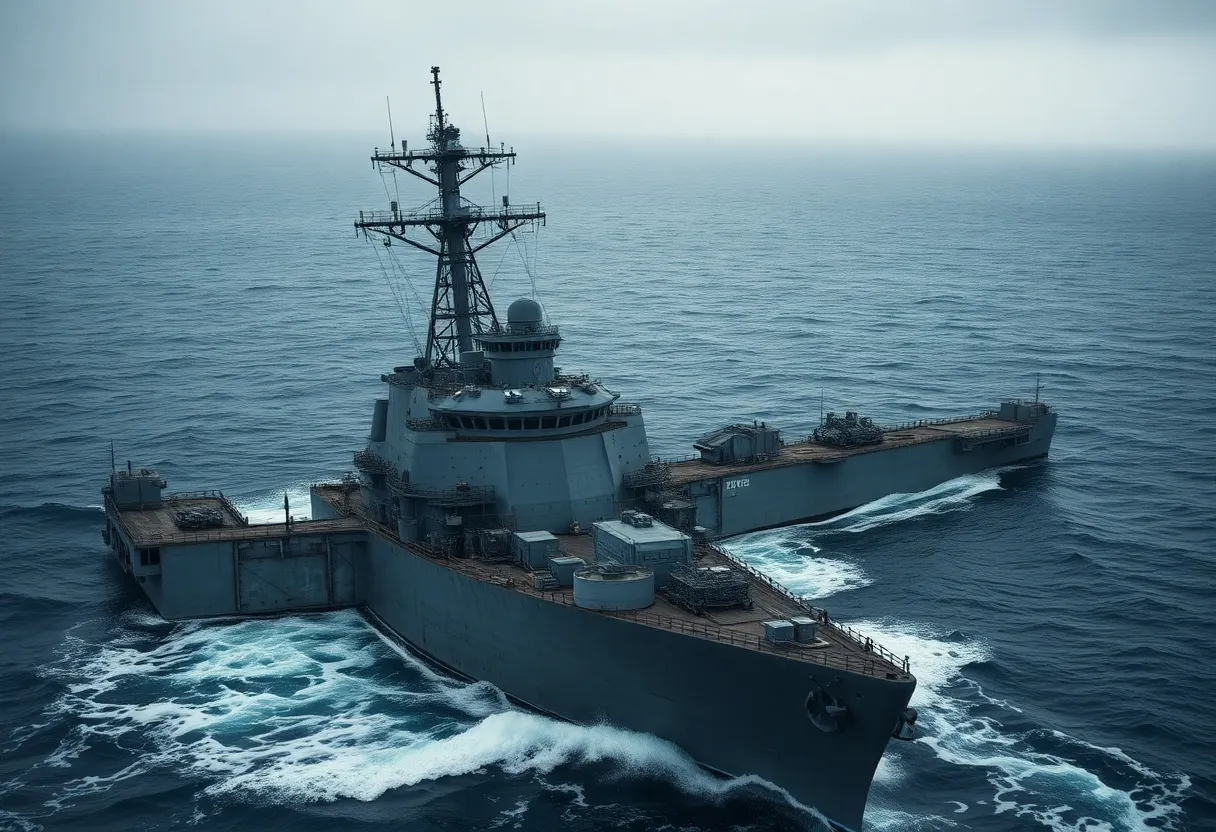News Summary
The USS Peterson, a former U.S. Navy destroyer, is at the center of a tragic scenario as many veterans face asbestos-related illnesses. Despite its lengthy service, the exposure to hazardous materials during construction and upgrades has resulted in a surge of diagnoses like mesothelioma among those who served aboard. As veterans confront health challenges, it’s crucial to understand their rights and the support available to them. Increased awareness and advocacy are needed to address the heartbreaking legacy of asbestos exposure in military service.
Deaths by Asbestos: The Untold Plight of USS Peterson Veterans
The USS Peterson (DD-969), a stalwart of the Spruance-class destroyers, served the United States Navy for over 25 years and participated in numerous military operations, from Cold War surveillance to counter-terrorism missions post-9/11. Yet, while the ship is recognized for its significant contributions to America’s naval prowess, the dark shadow of asbestos exposure looms over its memory. Thousands of Navy veterans who served aboard the Peterson are facing a grim reality as diagnoses of mesothelioma and other asbestos-related illnesses continue to emerge.
A Legacy Marked by Asbestos
The USS Peterson was commissioned in July 1977 and operated with a compliment of approximately 340 personnel. Despite its modern design, the ship contained the same asbestos-containing materials used in earlier naval vessels. From construction to various upgrades throughout its lifespan, asbestos was an omnipresent danger. The Navy continued to utilize this toxic mineral even as awareness of its lethal health risks began to surface.
Health Risks: A Hidden Nightmare
Veterans who served aboard the Peterson were exposed to asbestos mainly during construction, maintenance, and upgrades where materials were handled. This often meant that the fibrous material broke into microscopic particles, which could be inhaled or brought home, affecting family members as well. The latency period for asbestos-related diseases can extend decades, meaning those who served in the later years of the Peterson’s operational life may not show symptoms until years down the line. As a direct result, veterans are grappling with devastating diagnoses like malignant mesothelioma and other serious respiratory diseases.
Why Only Now?
The troubling issue of asbestos exposure among Navy personnel is not new. It stems from decades of reliance on this substance, regarded for its heat resistance, durability, and low cost. Even when numerous studies began highlighting the health hazards linked to this mineral, big companies producing these materials continued their supply, often concealing risks to protect their profits. As a result, many veterans unknowingly lined their paths up for tragedy during their service.
Your Rights as a Veteran
If you are a veteran who served aboard the USS Peterson and have developed an asbestos-related disease, there are avenues for assistance and compensation available. The Department of Veterans Affairs recognizes asbestos exposure during military service and offers tailored services for affected veterans. This includes access to vital disability benefits, medical care, and support services.
Additionally, financial compensation can be pursued through various trust funds established as a result of legal settlements. These funds, worth approximately $30 billion, can provide necessary financial relief to veterans battling illnesses caused by asbestos exposure. Claims for personal injuries and wrongful deaths can offer further financial recovery as well.
The Complicated Path Forward
While the resources are plentiful, pursuing compensation can be a complex process. Veterans now face not only the health ramifications of asbestos exposure but also the bureaucratic mazes involved in claims and applications. Meeting with a seasoned mesothelioma lawyer can substantially ease the burden, providing expertise to navigate this often arduous journey. Such legal professionals can help ensure that claims are properly filed and the families receive just compensation for their suffering.
The legacy of the USS Peterson and its service members should not be overshadowed by the tragedy of asbestos exposure. Recognizing the health risks, providing support for those affected, and holding responsible parties accountable is crucial to honoring the brave men and women who have served. Together, it is essential to illuminate this issue, raising awareness, and pushing for change in how the military manages these hazardous materials.
In Conclusion
As veterans grapple with the long-term consequences of service aboard the USS Peterson, it remains imperative to shed light on the ongoing risks linked with asbestos exposure. The battle against malignant mesothelioma is not just a medical issue; it is a fight for justice and recognition for all those affected. It’s crucial to advocate for support systems and compensation mechanisms that can aid veterans during this challenging time, reminding society that their sacrifices should not come at the cost of their health and longevity.
Deeper Dive: News & Info About This Topic
HERE Resources
Veterans Still Struggling with Asbestos Exposure After Decades
Additional Resources
- Sokolo Law: USS Peterson
- Wikipedia: Asbestos
- Sokolo Law: USS Nimitz
- Google Search: USS Peterson asbestos exposure
- Sokolo Law: USS Missouri
- Google Scholar: Asbestos Navy Veterans
- Sokolo Law: USS Enterprise
- Encyclopedia Britannica: Asbestos Related Illnesses
- Sokolo Law: USS Peterson
- Google News: Asbestos Exposure in Navy



















